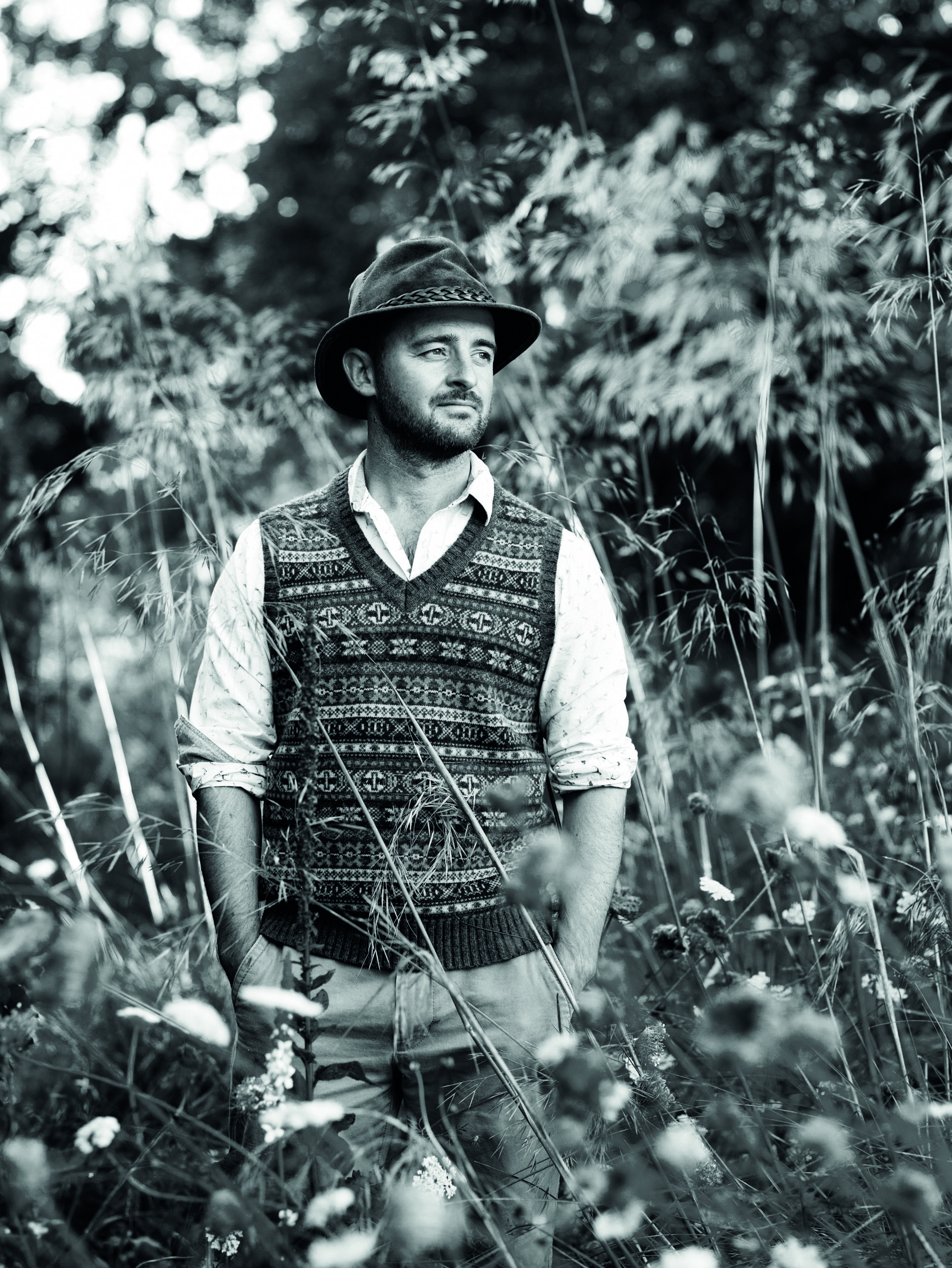On a gentle slope in the heart of southeast London, sits a naturalistic display of South African and North American flora, popping with vibrant colour and gently swaying in the soft, warm breeze of late summer. It’s a visual feast and one that feels botanically very different from the surrounding 16 acres of manicured borders and green space, which together make up the gardens of the Horniman Museum.
What is the Horiman museum?
Since opening in 1901, the museum has sought to display, educate and preserve mankind’s cultural response and effect on the natural world, housing everything from textiles to musical instruments, living butterflies and taxidermy. In 2015, when plans for the new World Gallery were taking shape, an opportunity arose to redevelop an aged food garden. The idea was to create a display linking living plants to the new anthropology and natural history exhibitions. Wisely, the museum appointed Sheffield-based professor of horticultural ecology, James Hitchmough, an expert in naturalistic, seed-sown planting schemes and at the forefront of sustainable urban greening.
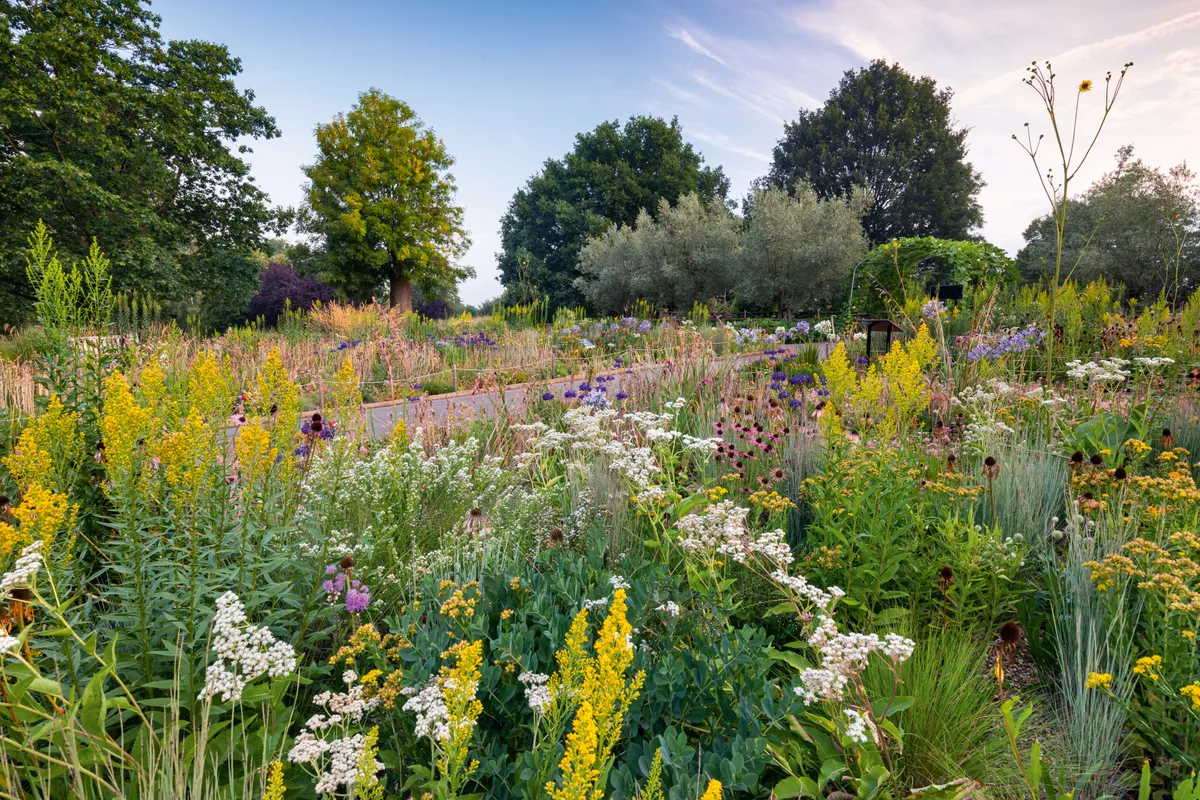
Given the role of redesigning the space, James explains: “The aim was to create a garden displaying the unique grassland flora of three different regions that have historically been inhabited and utilised by indigenous people, and are now critically endangered.” These include the prairie in North America, along with the Renosterveld steppe and eastern montane Ornamental grasses: the best grasses to grow in South Africa. While highlighting this plight, the garden also has to work practically, with a long season of interest to entertain visitors and a sustainable focus on its future management and maintenance.
Planting at the Horniman garden
Beginning in early spring with Dodecatheon and Pulsatilla, the flowering continues with Baptisia, Berkheya, species gladioli and much more. Appearing in colourful waves one after the other, the flowering reaches a peak in late summer with grasses, daisies, succulents and perennials jostling for attention. Head gardener Errol Fernandes confirms that the dynamic nature of the planting is key to its success. “Even as the flowers begin to fade late in the year, the garden takes on yet another look,” he says. Discover more of the plants used in the garden below.
USEFUL INFORMATION Address Horniman Museum & Gardens, 100 London Road, London SE23 3PQ. Tel 020 8699 1872. Web horniman.ac.uk
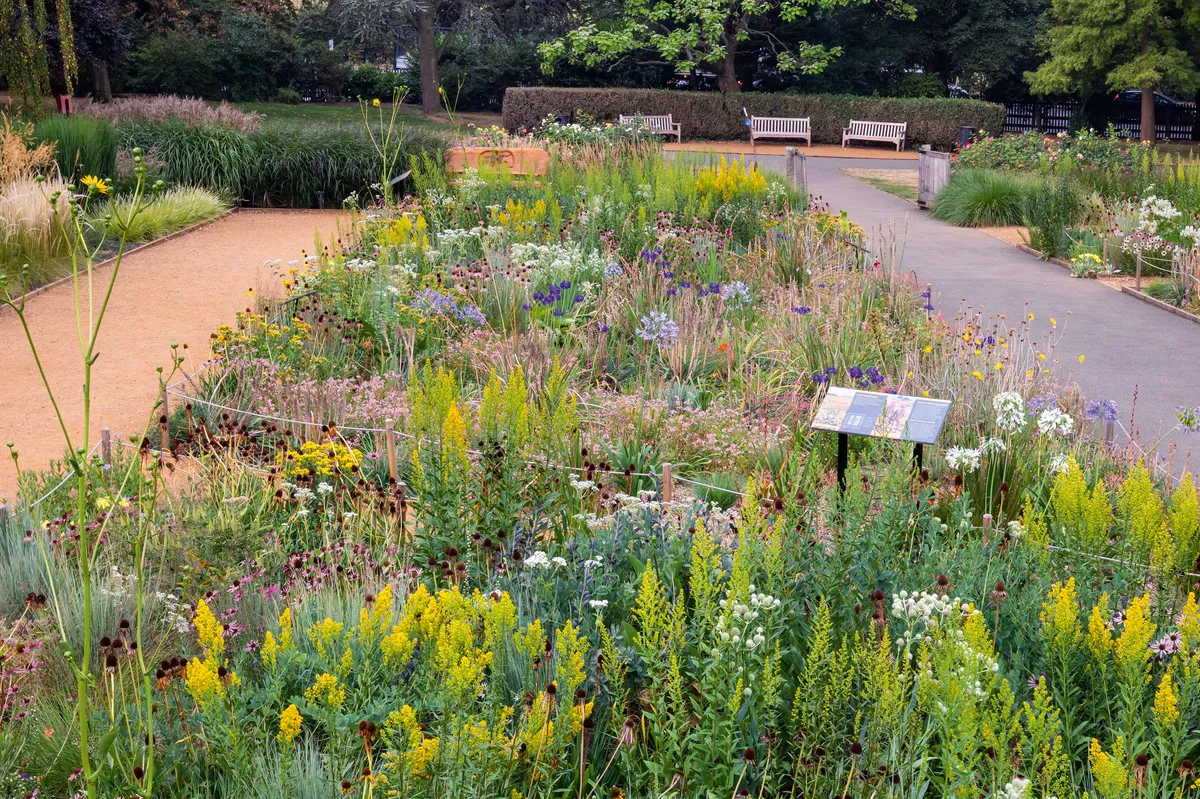
16 Key Plants from the Horniman Gardens
Galtonia candicans
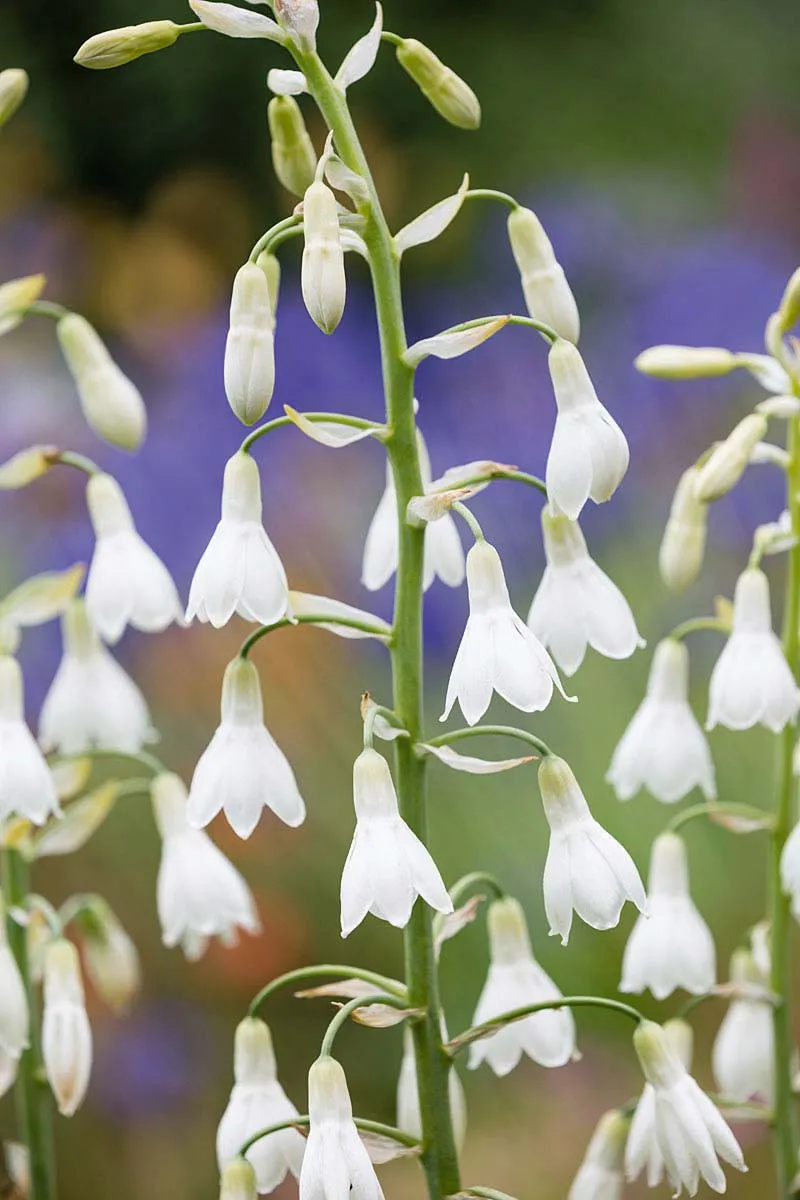
Upright, flowering stems of nodding, ivory bells crown the strappy, green leaves of this bulbous perennial during late summer.
1m. AGM. RHS H4, USDA 6a-10b.
Asclepias tuberosa
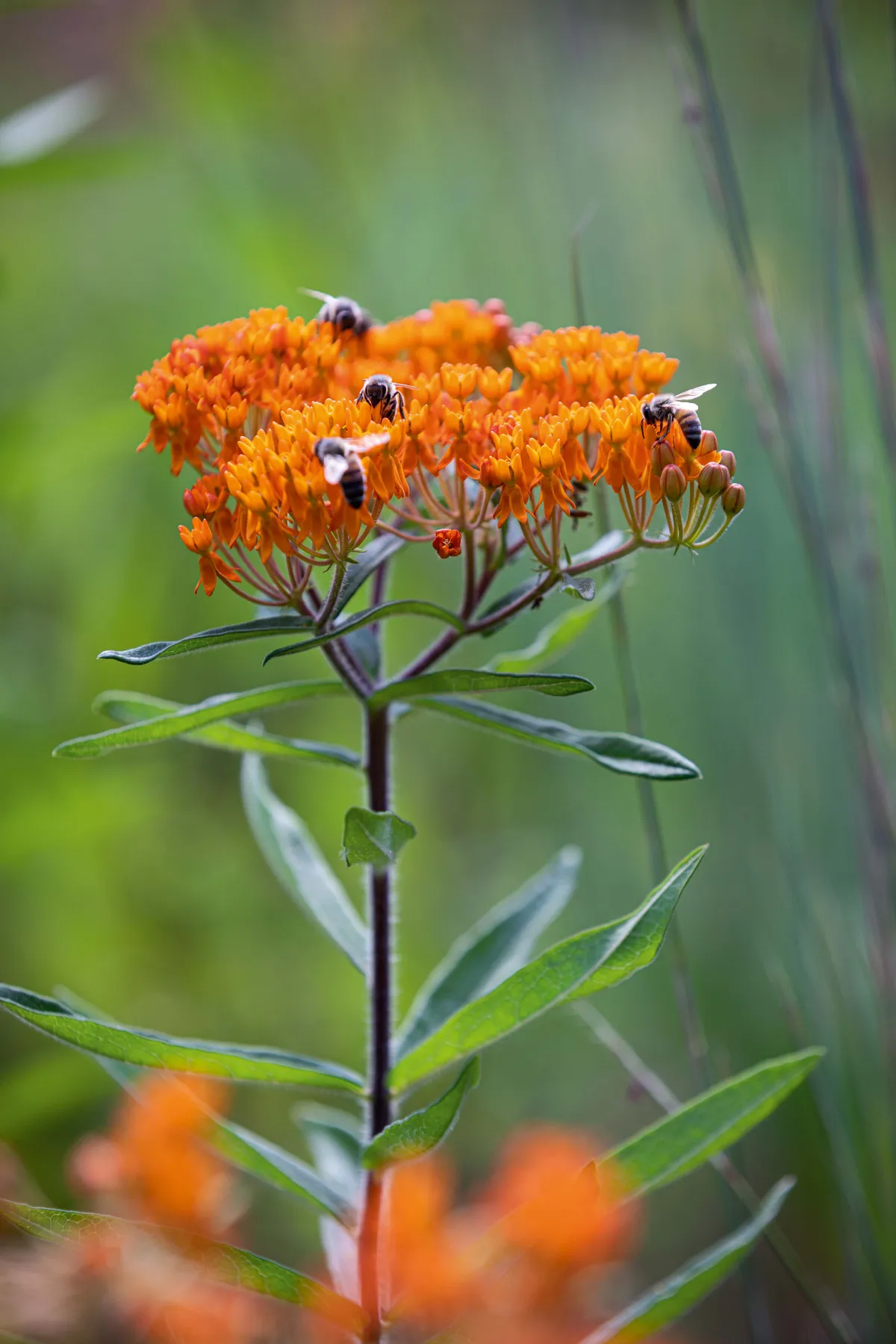
A tuberous perennial known for its flat-topped clusters of vivid-orange flowers loved by butterflies and bees. Its roots were traditionally chewed by Native Americans as a cure for pleurisy. 1m. RHS H4, USDA 3a-9b.
Solidago rigida var. humilis ‘Golden Rockets’
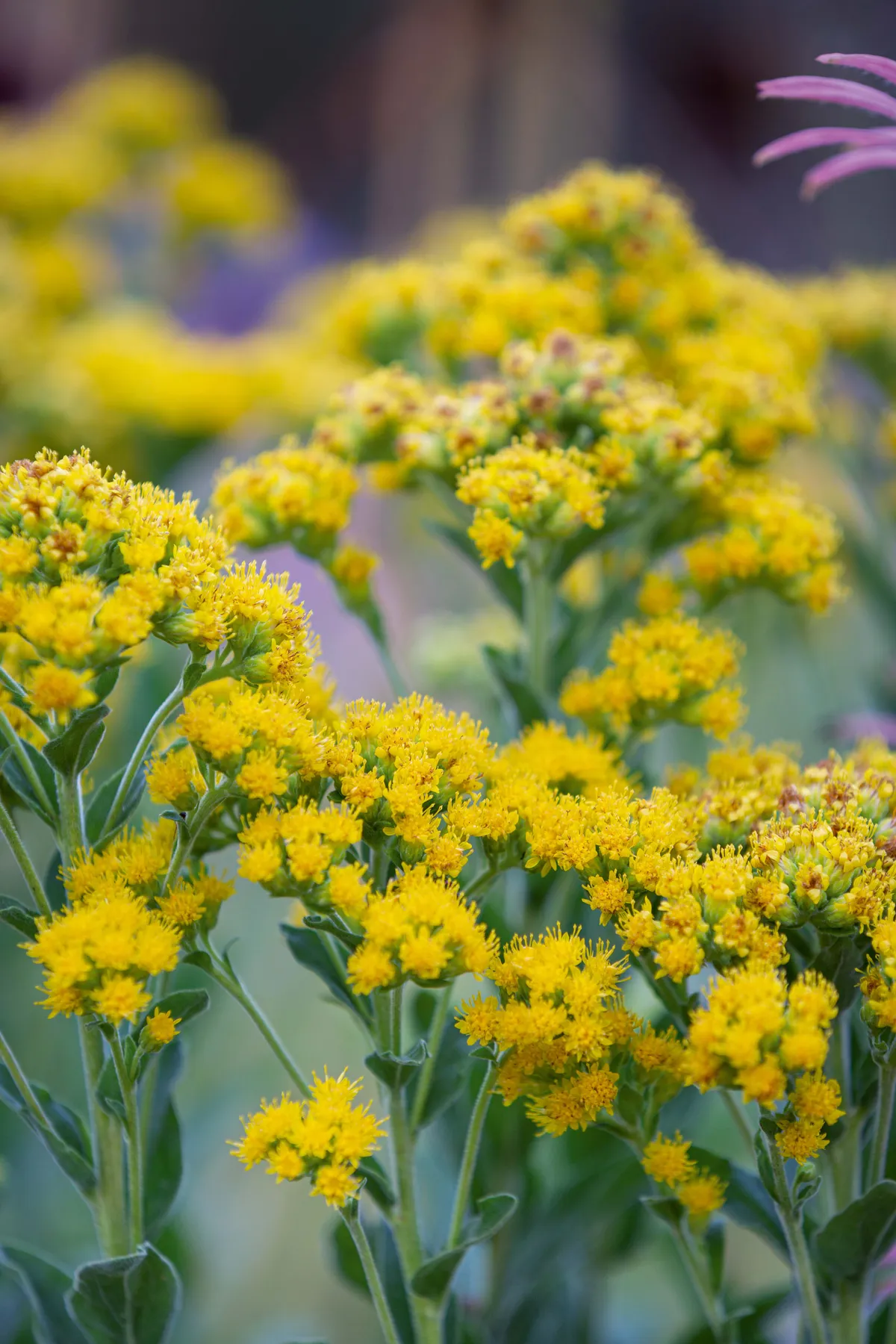
Stiff flowering stems erupt from perennial, broad, basal leaves in late summer, holding soft clusters of small, rich-yellow flowers that are adored by pollinators. 60cm.
Baptisia australis
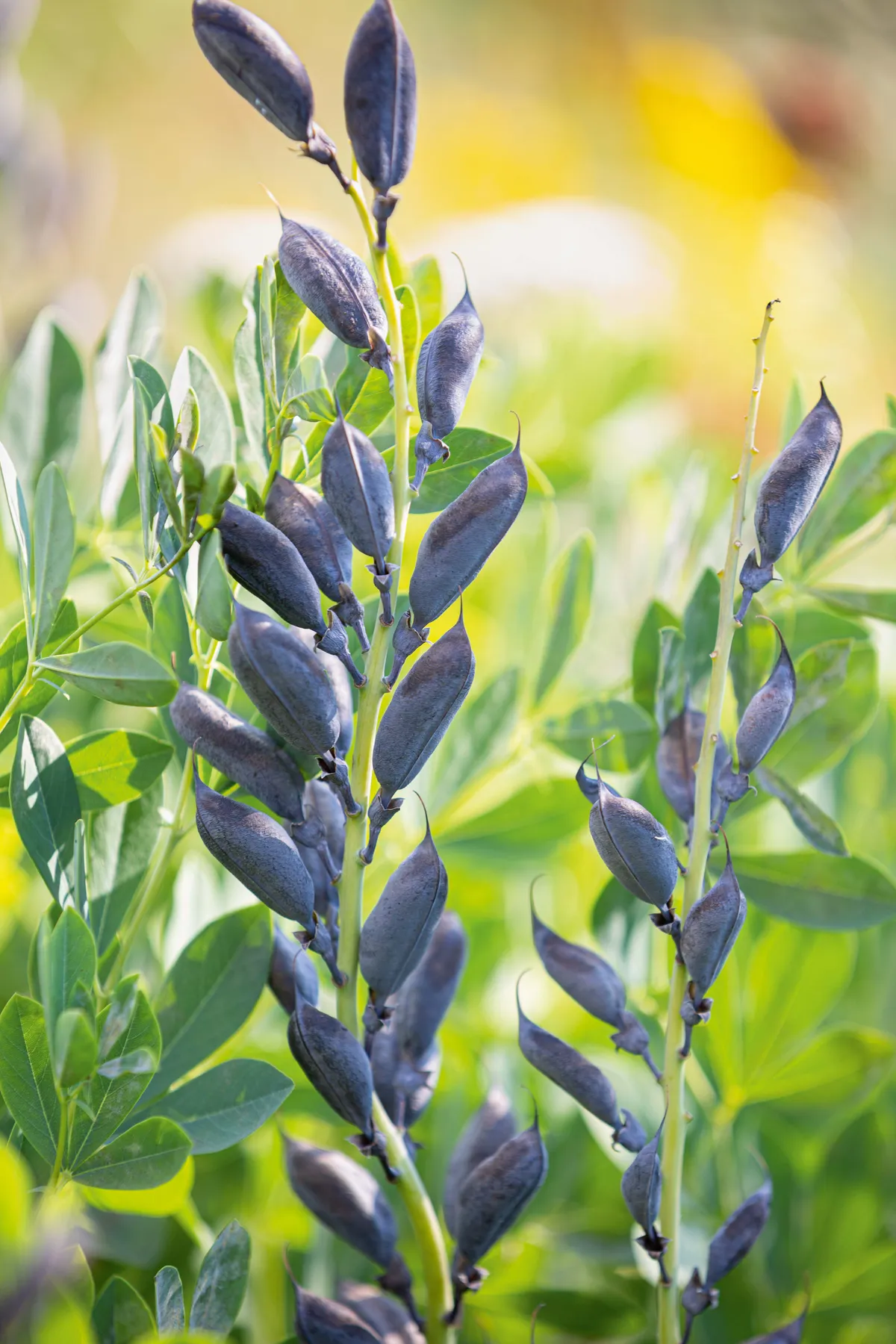
A bushy perennial from the pea family with fresh, trilobed leaves and numerous vivid-blue, pea-like flowers during summer, followed by interesting, conspicuous seedpods that remain through winter. 1.2m. AGM. RHS H7, USDA 3a-9b.
Silphium terebinthinaceum
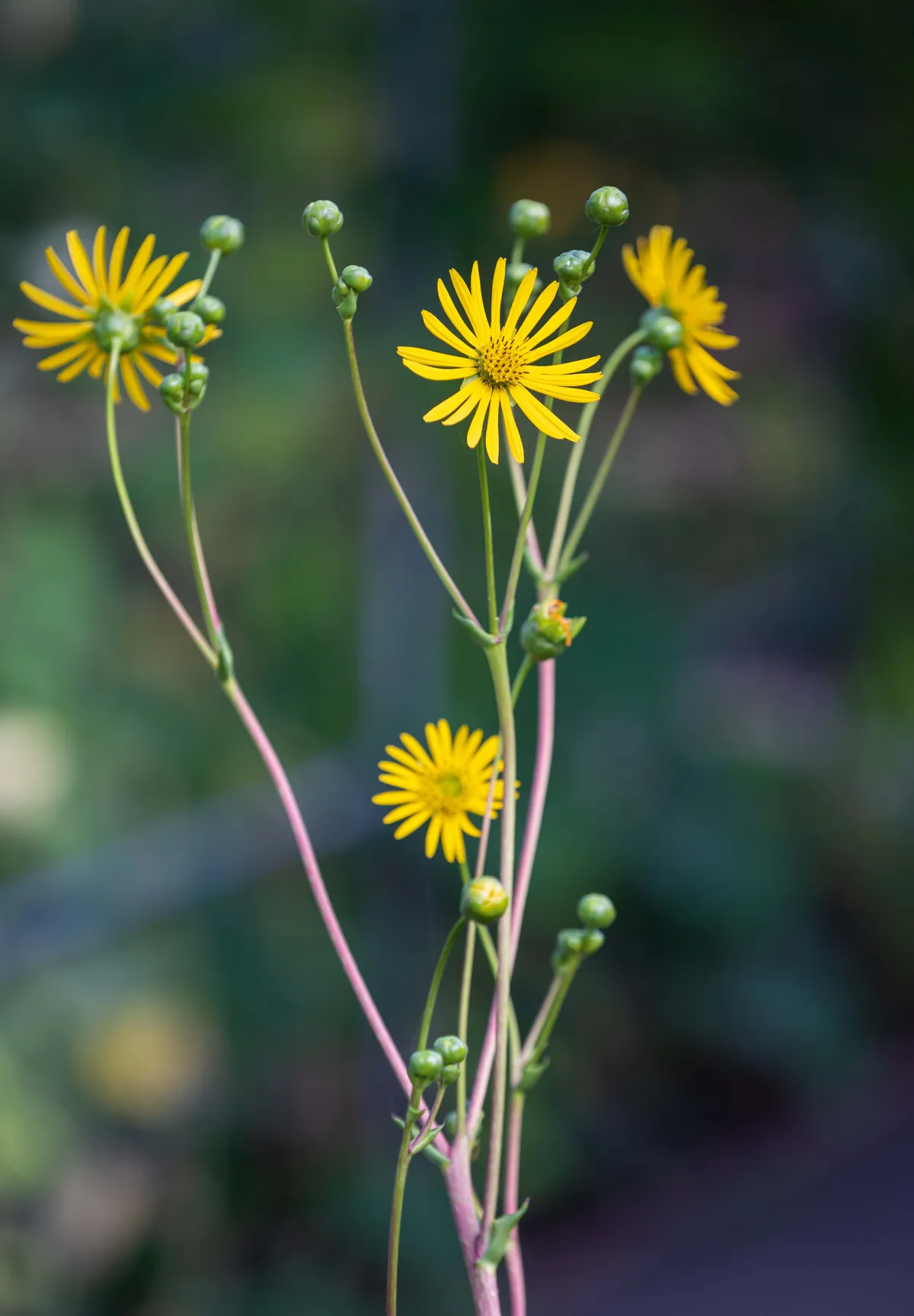
Known as prairie burdock, this robust perennial has large, hirsute, spade-like leaves. Bright-yellow, daisy-like flowers appear in loose clusters aloft strong, tall stems from midsummer through to autumn. 3m. RHS H7, USDA 4a-8b.
Diascia vigilis
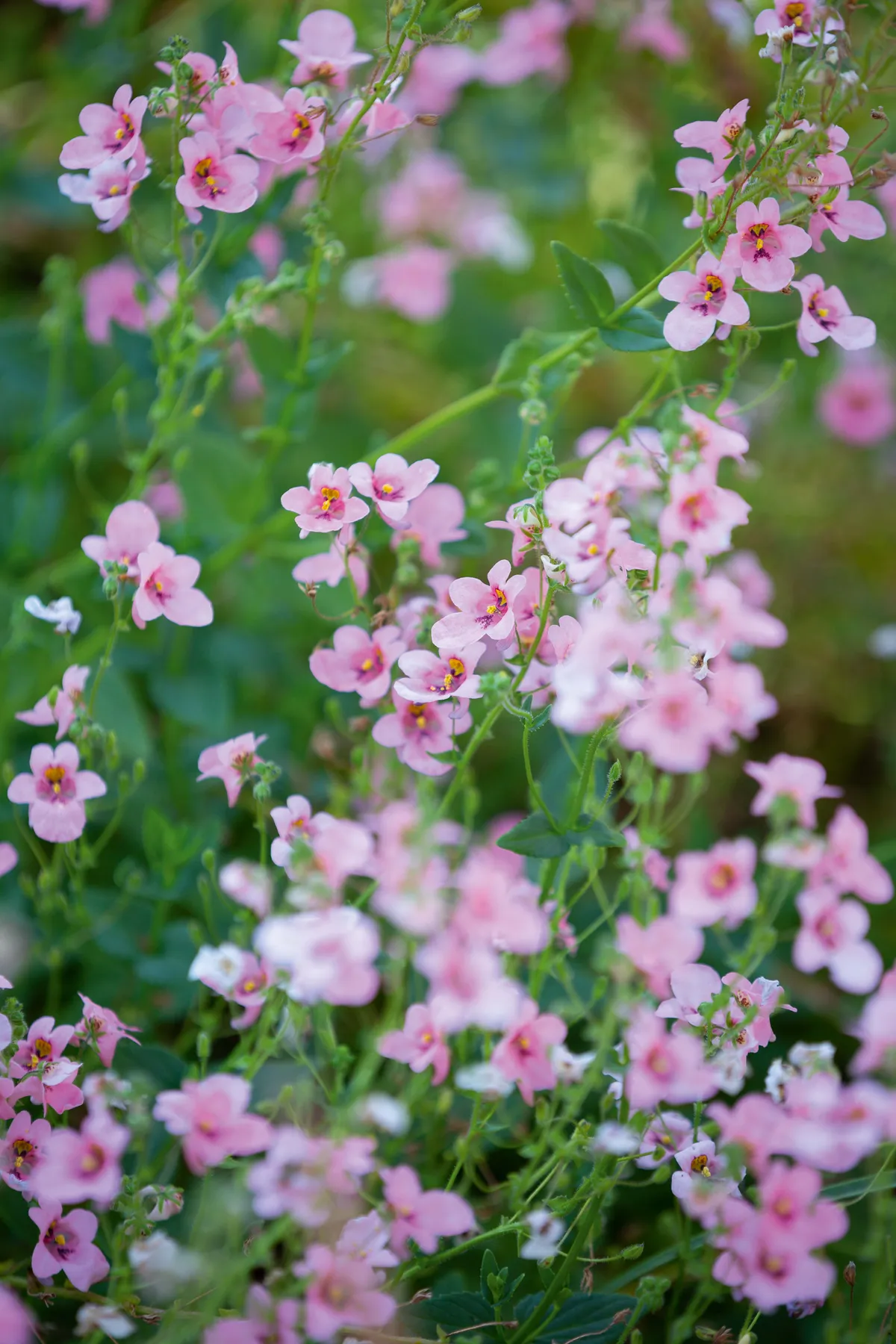
Loose spires of delicate, soft-pink flowers appear through summer and autumn, complementing the small, pale-green leaves of this semi-evergreen, sprawling perennial. 40cm. AGM. RHS H3.
Aloe (no specific species)
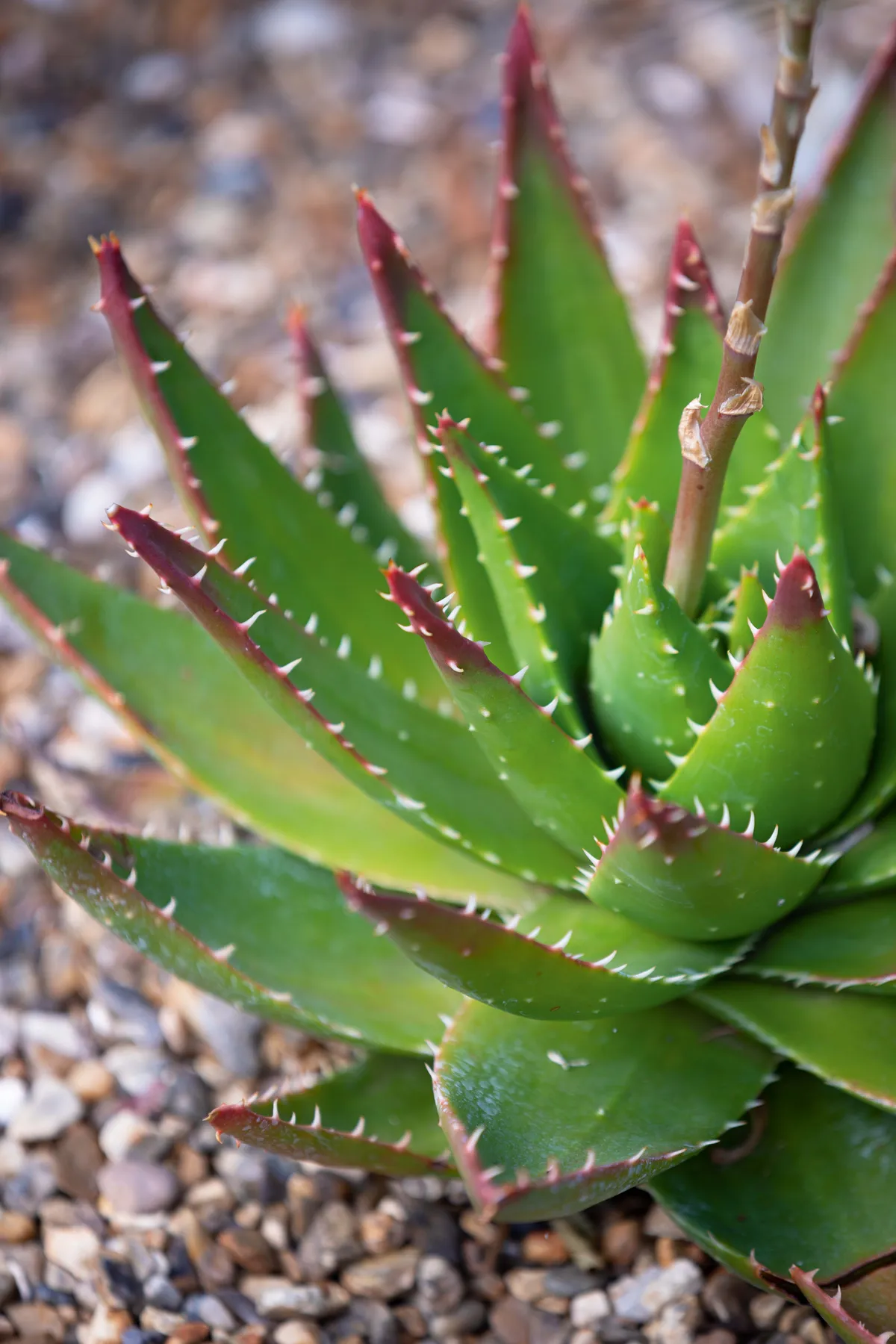
A large genus with many species native to South Africa, having thick succulent, pointed leaves that form a permanent, basal rosette. During late summer, individual spikes of tubular, orange flowers appear on mature plants.
Solidago speciosa
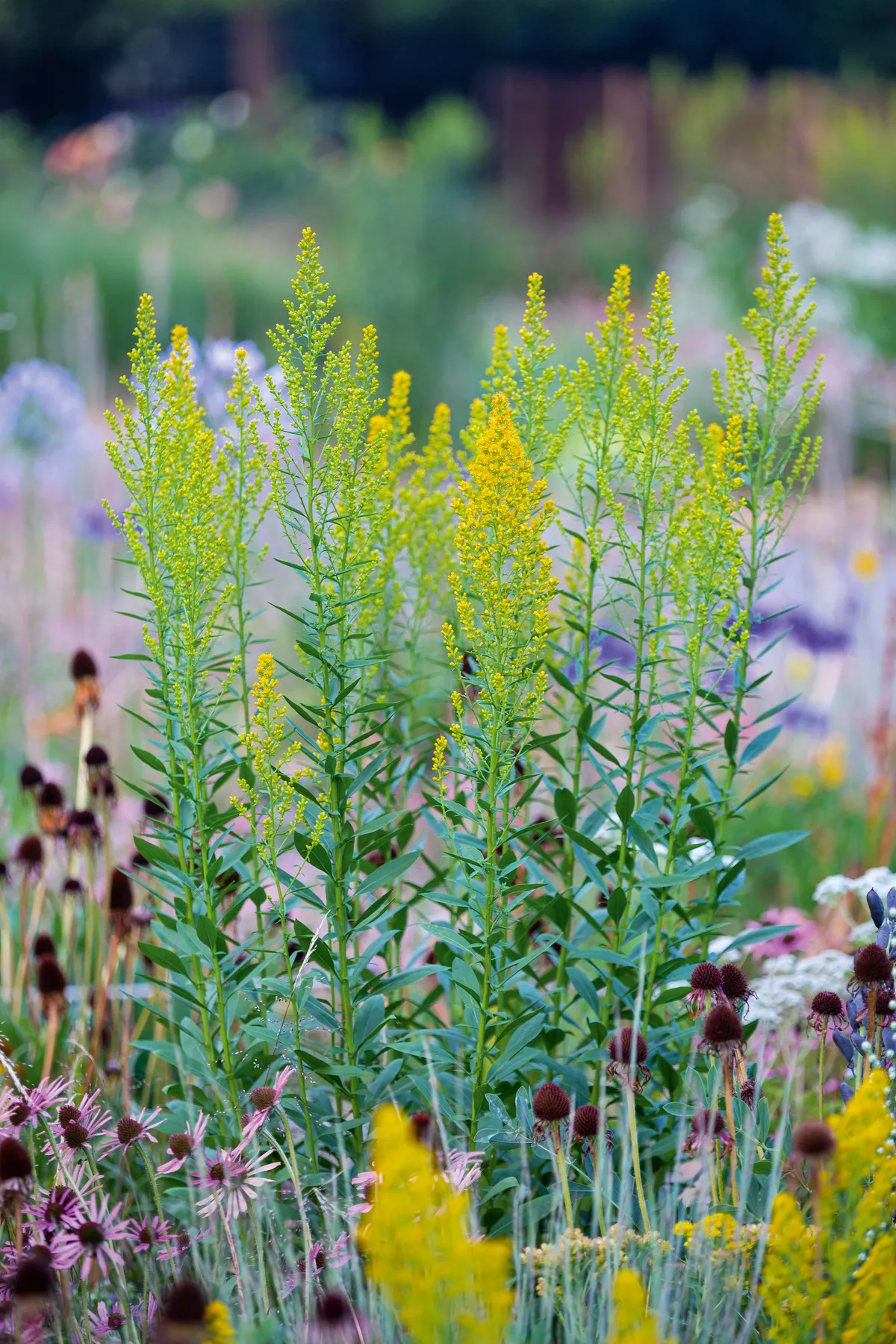
A rhizomatous, unbranched perennial, often with dark stems, small leaves and an upright habit, holding a terminal spire of tiny, yellow flowers throughout late summer. 90cm. USDA 3a-8b.
Parthenium integrifolium
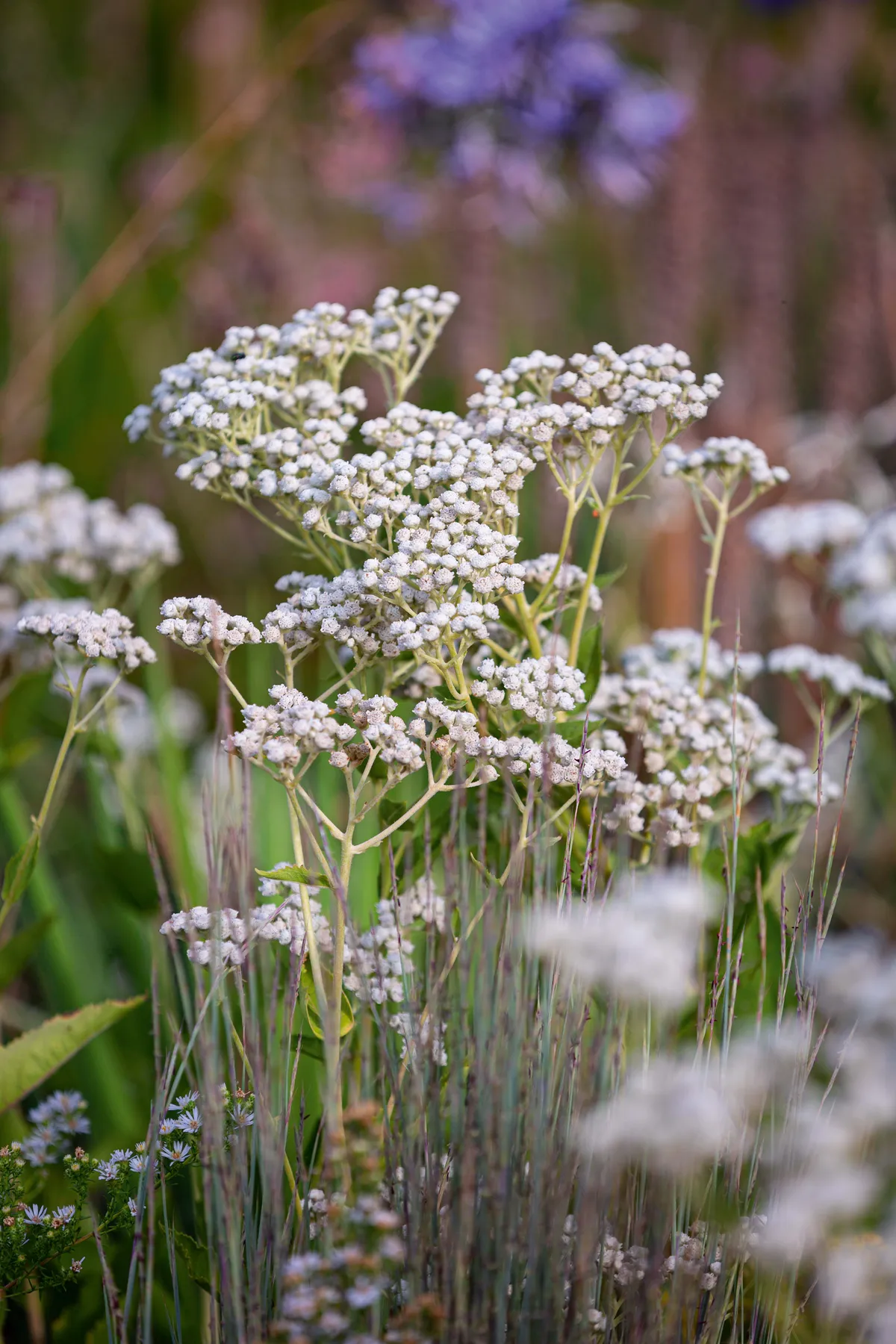
A tuberous perennial with sturdy, upright stems holding clusters of white flowers during summer and early autumn, turning dark brown and ornamentally standing through winter. Usedas a medicine by Native Americans. 1.2m. USDA 4a-8b.
Echinacea tennesseensis ‘Rocky Top’
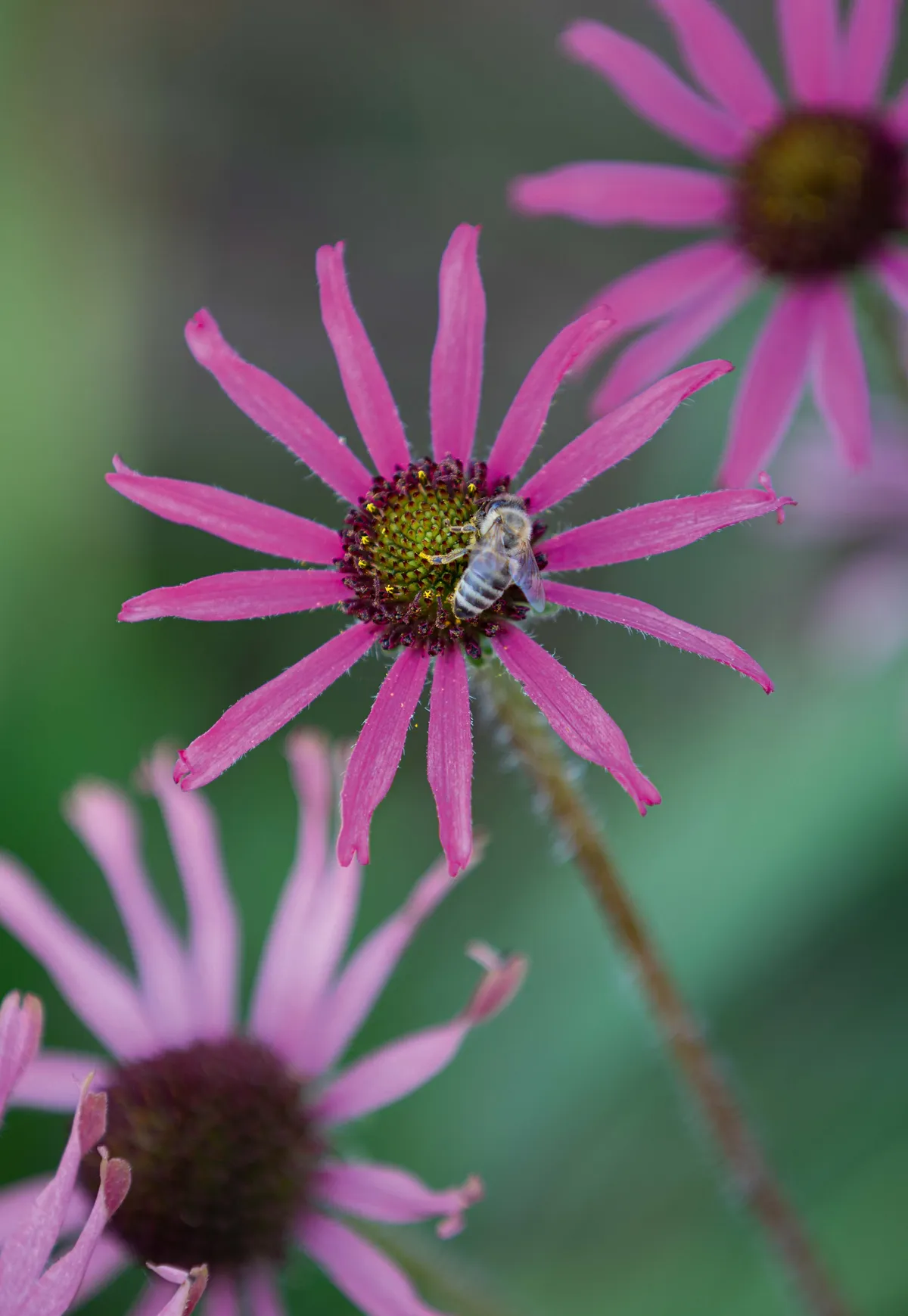
Pink, upwardly curved petals adorn bold, central cones throughout late summer, held on the thin, upright stems of this clump-forming perennial. 70cm. RHS H5, USDA 5a-8b.
Schizachyrium scoparium
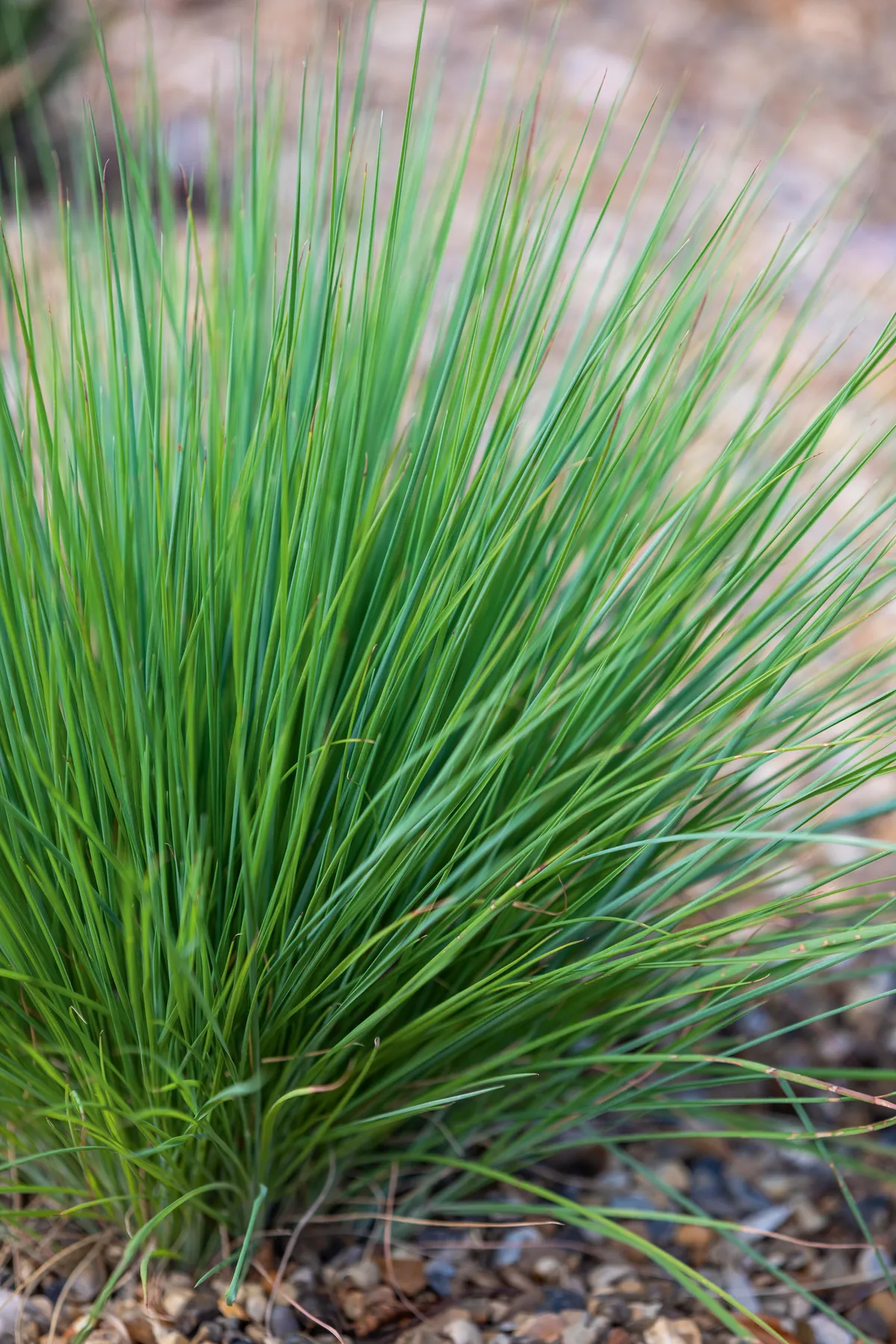
A deciduous, perennial grass that forms a tufted mound of bluish-green foliage, followed by reddish-brown flowers in late summer before taking on fantastic autumnal shades. 90cm. RHS H6, USDA 3a-9b.
Agapanthus ‘Bressingham Blue’
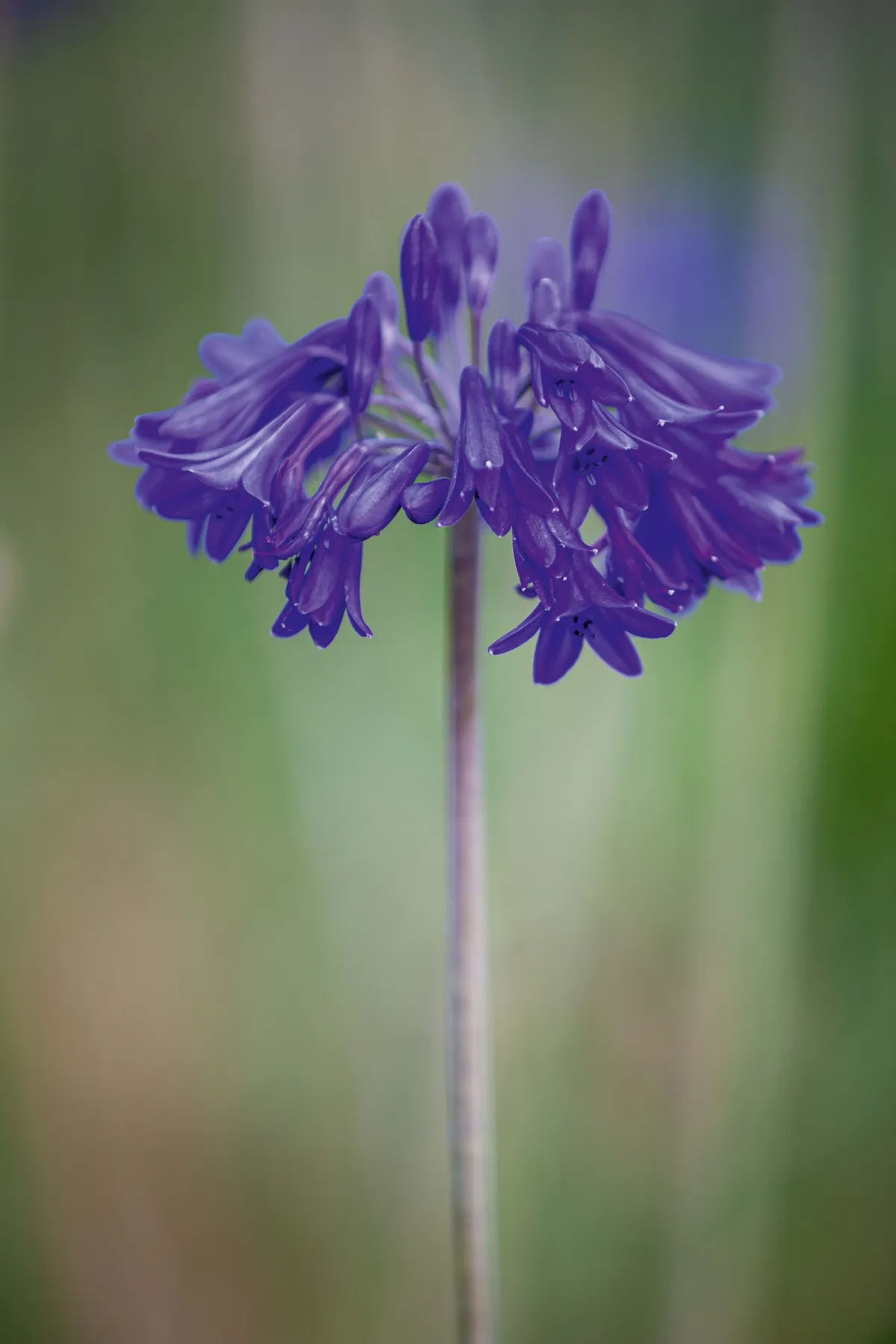
A clump-forming perennial with deciduous, strap-like, arching leaves and relaxed spherical umbels of vibrant-blue tubular flowers from midsummer to early autumn. 80cm. RHS H4, USDA 8a-11.
Kniphofia uvaria
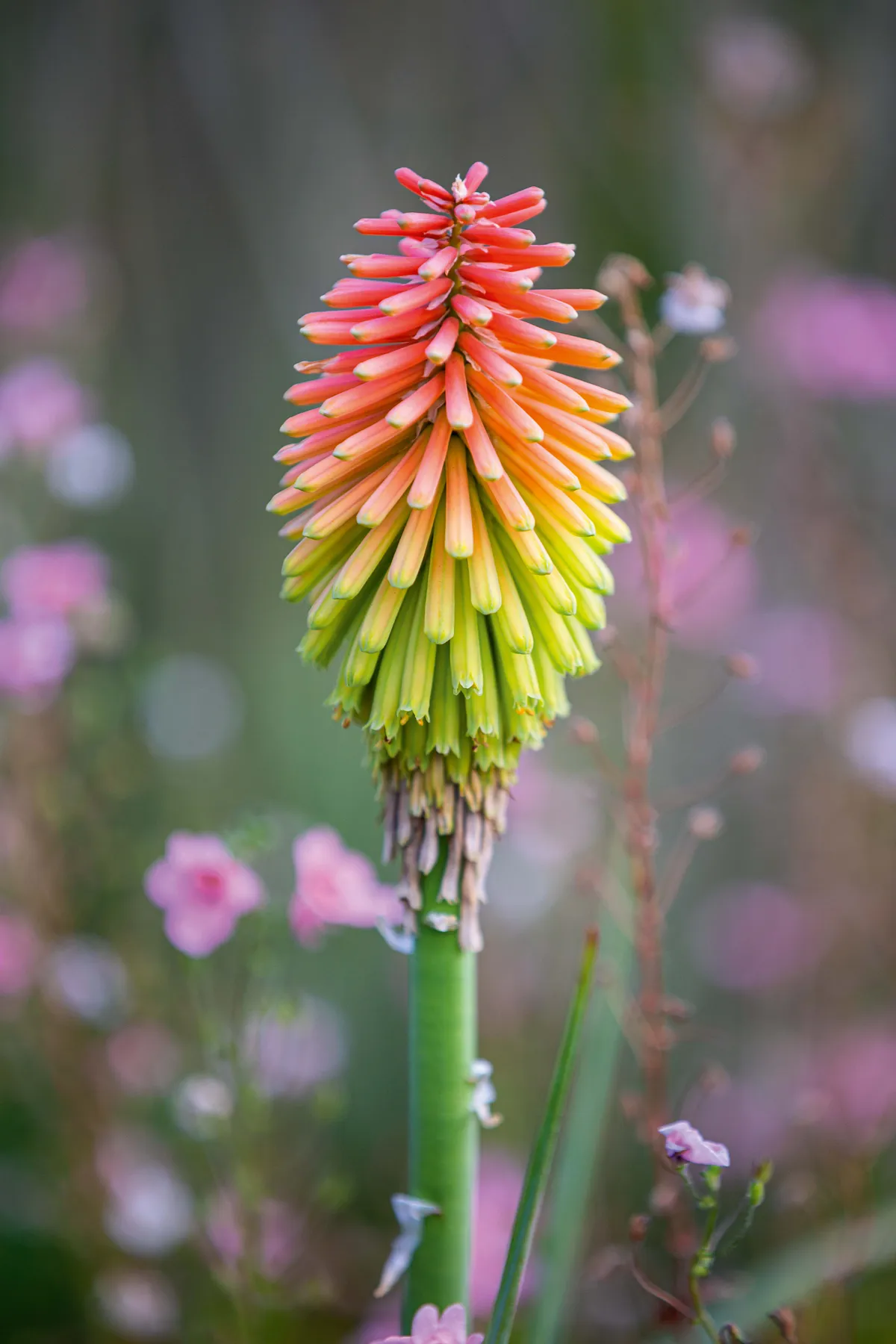
Dramatic perennial with chunky spikes of rich-orange flowers during summer. These open from red buds before fading to yellow, creating the distinctive, ‘hot poker’ appearance above strappy leaves. 1.4m. USDA 5a-9b.
Eucomis bicolor
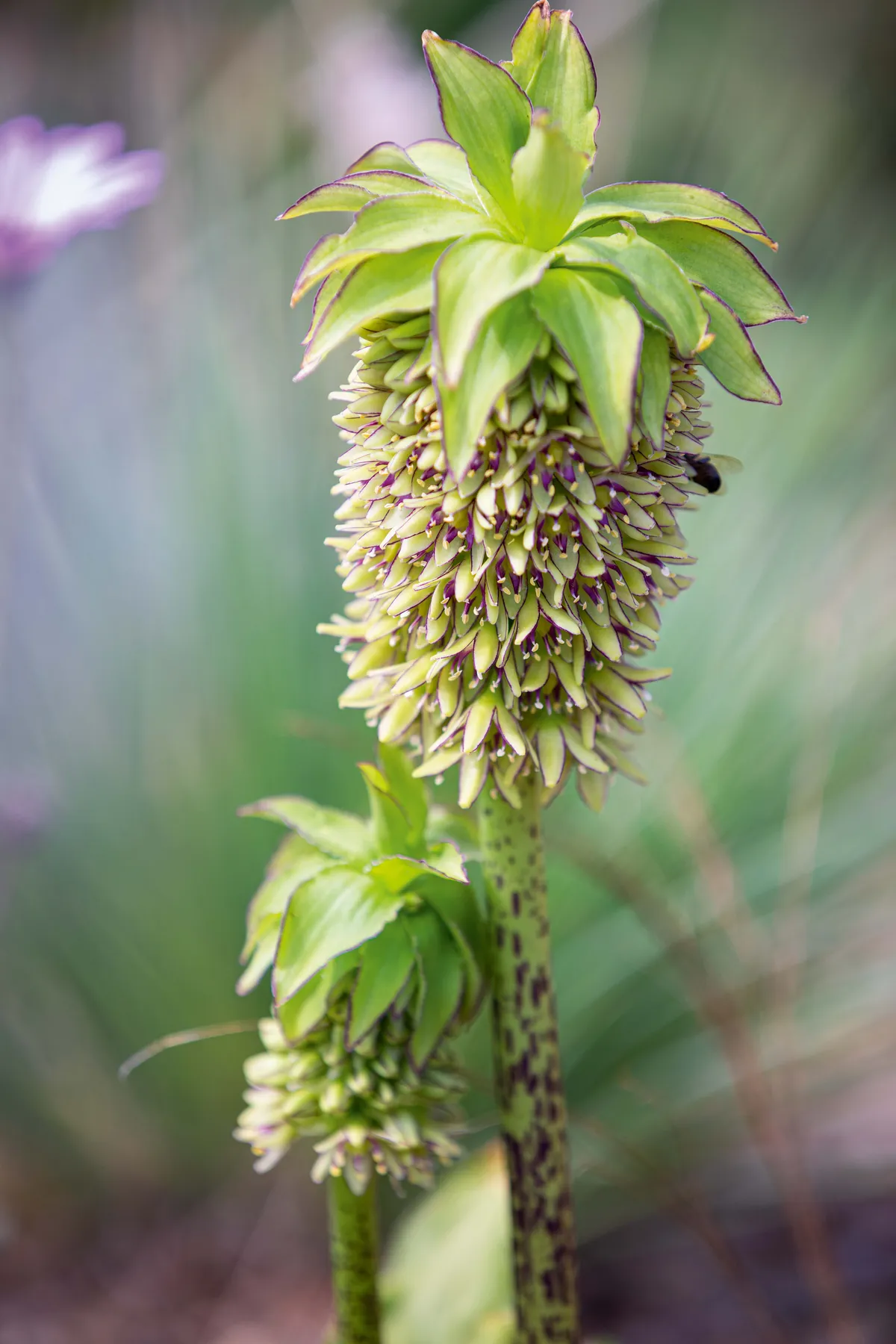
A bulbous perennial with decorative, burgundy markings on the edges of the flowers and spots on the leaves and stem, flowering from midsummer to early autumn. 50cm. AGM. RHS H4.
Agapanthus praecox
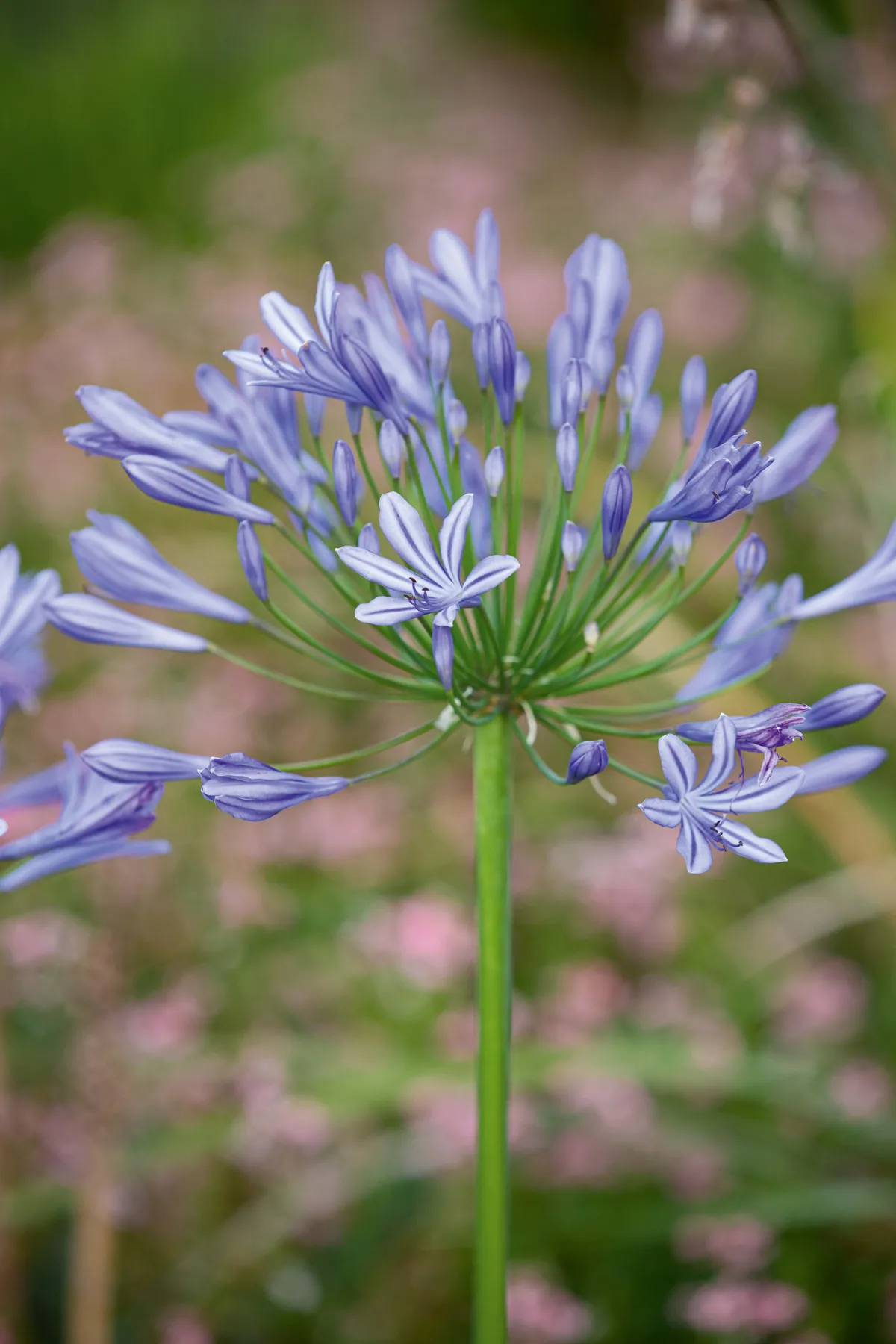
A semi-evergreen perennial with globes of blue, trumpet-shaped flowers that appear from midsummer to early autumn, held on strong, upright stems above thick, strappy, green foliage. 1m. USDA 8a-10b.
Eryngium yuccifolium
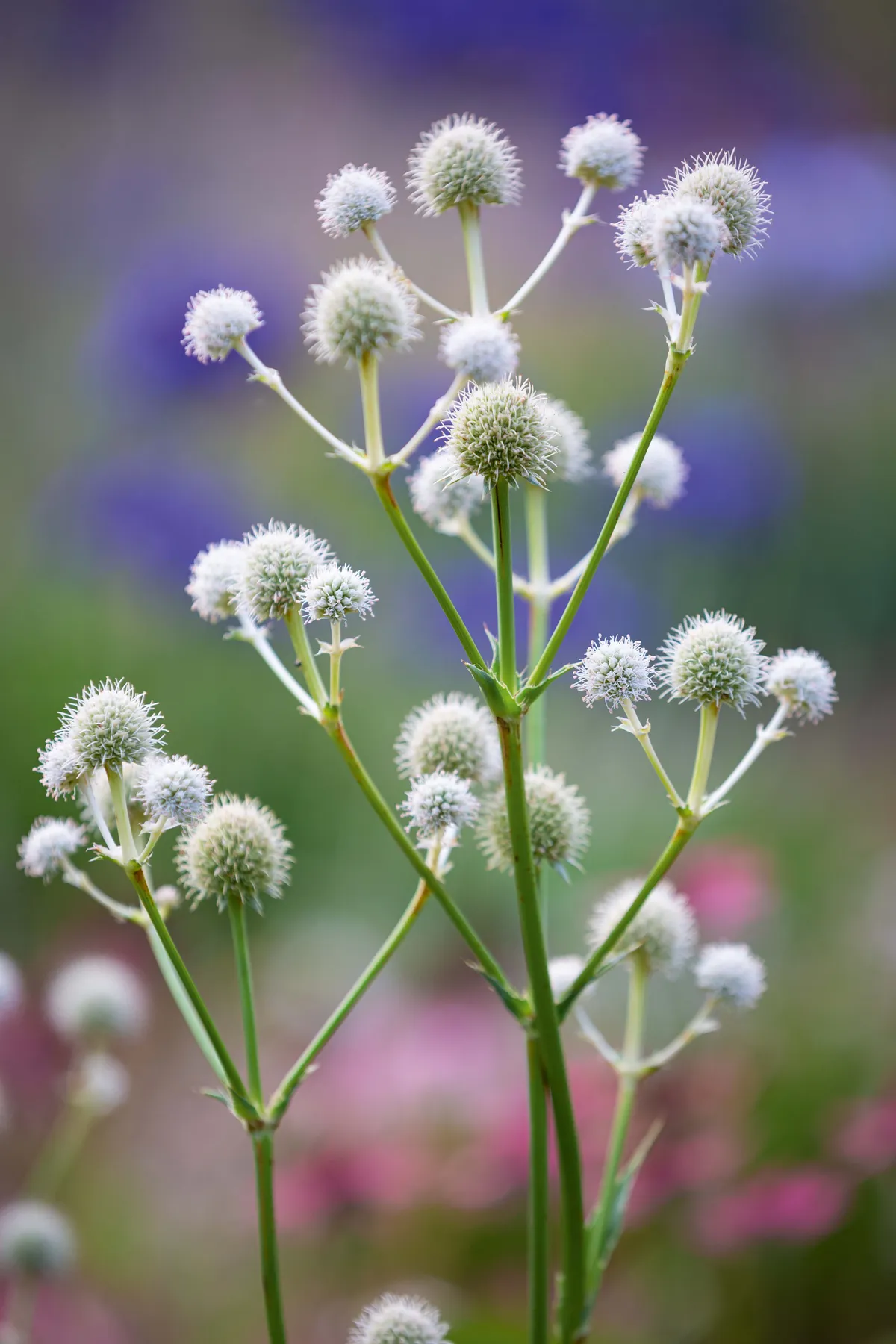
An evergreen perennial that has spiny edged, sword-like blue-grey leaves that form a basal cluster. Spherical creamy white flowerheads appear late summer on upright branched stems. 1m. RHS H4, USDA3a-8b.
